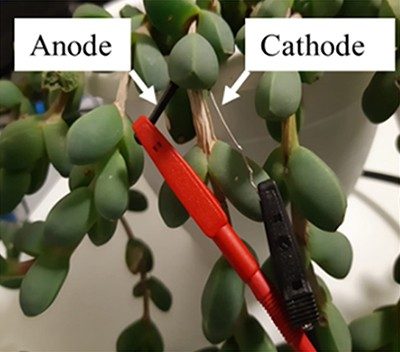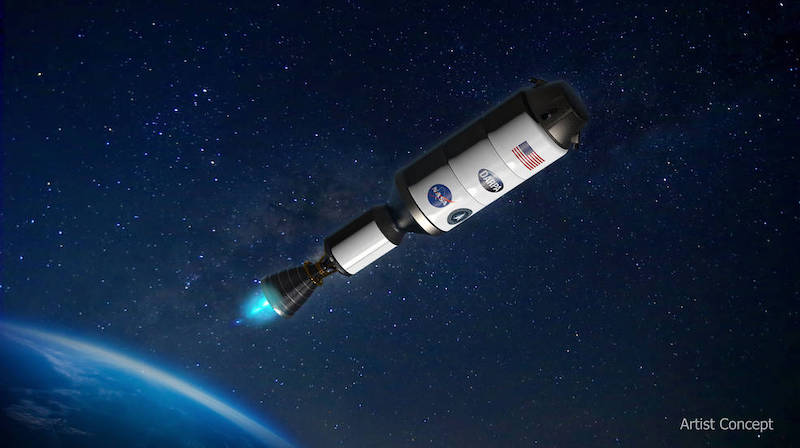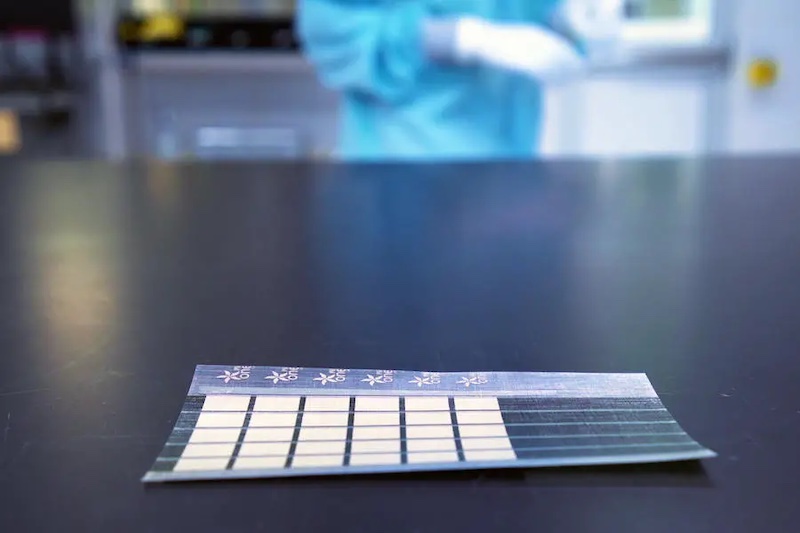Green energy that’s really green, sci-fi-like tractor beams, and nuclear rockets: This week’s coolest things will suck you in and blow you away.

What is it? Researchers at the Technion-Israel Institute of Technology turned a regular houseplant into a living solar fuel cell.
Why does it matter? By collecting the electrons that plants produce during photosynthesis, the researchers devised a way to generate clean electricity from a natural, solar-powered process. “This work presents a method to simultaneously absorb CO2 while producing an electrical current with minimal engineering requirements,” they wrote in ACS Applied Minerals and Interfaces.
How does it work? A typical fuel cell requires an electrically conducive electrolyte solution. The Technion team, led by Noam Adir, tested whether the water stored inside a succulent plant could serve that purpose. They inserted one positive and one negative electrode into a single leaf and connected them to a circuit. When the plant was exposed to light, its natural photosynthesis produced a small electric current.

What is it? Chinese scientists moved an object using a tractor beam.
Why does it matter? Once the stuff of science fiction, beams of light or particles that can move objects from a distance have recently been achieved in the real world. While tractor beams have been used to nudge microscopic matter, this is the first demonstration of a beam capable of pulling an object visible to the naked eye.
How does it work? The researchers, at QingDao University of Science and Technology, hung a 5-centimeter rectangle made of graphene and silica in a low-pressure gas chamber. They aimed a laser at one end of the rectangle, which heated up the gas molecules behind it. Thus energized, those molecules pushed against the composite material, swinging it toward the laser light source. “Our technique provides a non-contact and long-distance pulling approach, which may be useful for various scientific experiments,” said Xia Wang, senior author of a study in Optics Express. The experimental environment is similar to the atmosphere on Mars, which suggests that the technique could be used for manipulating vehicles or materials on the red planet, Wang added.

What is it? NASA and DARPA will collaborate to build and test a nuclear thermal rocket engine for future missions to Mars.
Why does it matter? Faster is safer when it comes to long-distance space travel, because it limits the amount of time astronauts spend in transit. The project will “develop and demonstrate advanced nuclear thermal propulsion technology as soon as 2027,” said NASA Administrator Bill Nelson.
How does it work? Nuclear thermal rockets can be more than three times as efficient as conventional propulsion systems. They are powered by a fission reactor that generates extremely high temperatures. That heat is transferred from the engine to a liquid propellant, which exits the craft through a nozzle and propels it forward. It’s been more than 50 years since NASA last tested a nuclear thermal rocket.

What is it? Geophysicists at Peking University believe the Earth’s core has slowed its spin and is reversing direction.
Why does it matter? Not to worry, the scientists say. Their research, published in Nature Geoscience, suggests that the core, more than 3,000 miles below the surface, slows down and changes direction every 60 or 70 years.
Why does it matter? Researchers Yi Yang and Xiaodong Song compared the time it took seismic waves from pairs of earthquakes to reach from the southern Atlantic to Alaska over a period of several decades. They found that the waves sped up from the 1960s through the 1990s, which they attributed to changes in the core’s rotation. Then, in the 2010s, waves that had previously sped up traveled at constant rates. These “surprising observations,” they write, ”indicate the inner core has nearly ceased its rotation in the recent decade and may be experiencing a turning-back in a multidecadal oscillation.”

What is it? MIT engineers made a lightweight, flexible solar cell that can be glued onto fabric.
Why does it matter? Thinner than a human hair and one-hundredth the weight of conventional solar panels, the MIT cells could be laminated onto boat sails or drone wings, or used to power rescue tents in emergency response operations, said Vladimir Bulović, senior author of a new paper in Small Methods.
How does it work? The team integrated nanomaterials into electronic ink and printed it onto a thin substrate. They then printed an electrode on top, completing a solar module that is only 15 microns thick. The module can be peeled off the substrate and stuck to a thin, strong material called Dyneema, resulting in a lightweight, flexible solar cell. The device could generate about 370 watts per kilogram — about 18 times more power per kilogram than conventional solar cells.





